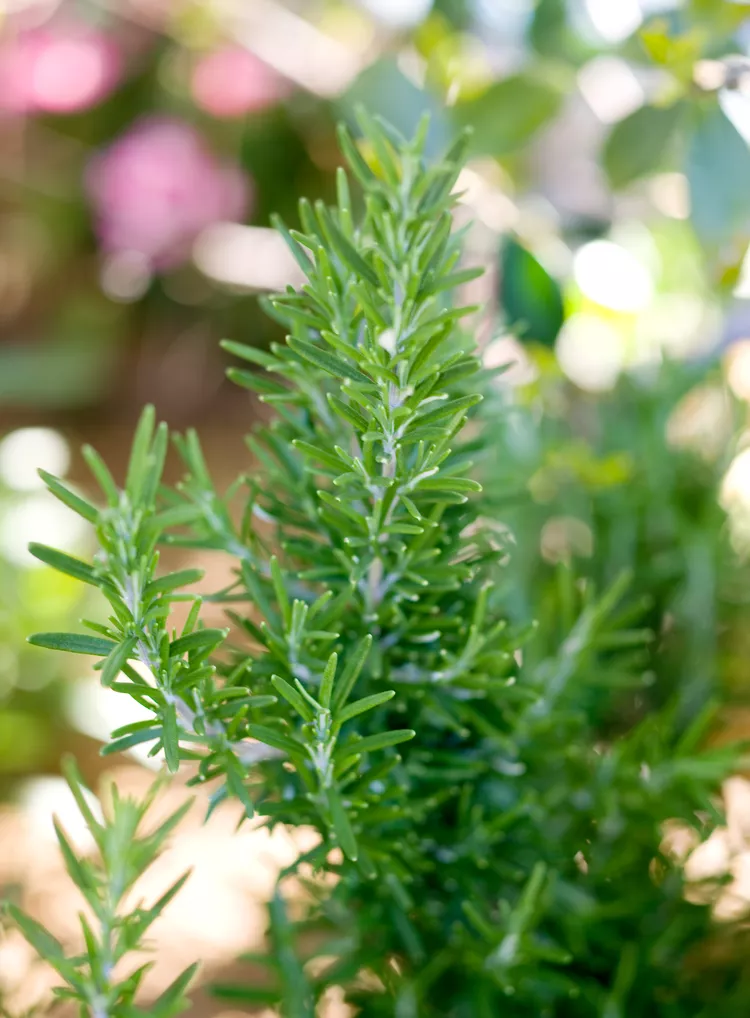Rosemary grows well in relatively dry, sandy soil and bright sun. Because of this herb's specific growing needs, finding suitable rosemary companion plants can be challenging, but several other herbs, vegetables, and flowers grow well in similar conditions. Here are some of the best plants to pair with rosemary to deter pests and keep your garden as low-maintenance as possible.
Lavender
Growing lavender and rosemary together makes sense. These plants both come from the Mediterranean region, have similar care requirements, and don’t need much water. Plus, if you plant these two herbs together, they’ll perfume your garden beds with a lovely fragrance. Pollinators and other beneficial insects are sure to visit, too.
Brassicas
Brassicas, such as cauliflower, Brussels sprouts, and cabbage, are often plagued by pests that bore holes in leaves and leave harvests looking shabby. However, growing strongly scented rosemary plants near brassicas naturally repels many common garden pests, including cabbage moths. Rosemary doesn’t need as much water as brassica plants, so you may want to grow the herb in a pot near your vegetable garden.
Sage
Sage is a woody-stemmed herb that loves sun and well-draining soils, so it gets along nicely with rosemary in the garden. If you garden in a small space, sage and rosemary plants can grow together in a roomy planter as long as they have space to spread out. Aside from their similar growing needs, sage’s silver-green leaves and purple flowers provide an attractive backdrop for rosemary’s spiky foliage.
Carrots
Carrot flies are major carrot pests, and they’re particularly attracted to the scent of carrot leaves. Adult carrot flies lay their eggs near carrots, and when those eggs hatch, the larvae burrow into the soil and chew holes and tunnels in the carrot roots. However, if you grow rosemary near carrots, the herb's strong aroma helps conceal the scent of carrots and makes it much harder for carrot flies to find their quarry.
Oregano
Like rosemary, oregano is an easy-going herb that grows well in bright sun and relatively dry soil. Keeping these two herbs together reduces your gardening tasks because you can water them at the same time and don’t need to worry about adding much fertilizer. Keep in mind that oregano is more cold-hardy than rosemary, which is often grown as an annual in USDA Zones 7 and colder.
Beans
Bean beetles have a penchant for nibbling on bean plants and leaving unsightly holes and skeletonized bean leaves in their wake. Extensive damage weakens beans and makes them significantly less productive. Bean beetles can also transmit plant viruses that cause problems. The good news is that rosemary’s strong scent hides nearby bean plants, making them much harder for bean beetles to find.
Thyme
With its low water needs and sun-loving nature, thyme is another obvious choice for growing near rosemary. It grows well in pots or herb beds, and some low-growing thyme varieties can be used as groundcovers for suppressing weeds beneath rosemary plants. Thyme is more cold-hardy than rosemary, so you may need to replace the rosemary every year if you don’t overwinter it indoors.
Sweet Alyssum
Sweet alyssum plants boast delicate purple and white flowers that are often used to spruce up container gardens and the front of flowerbeds. Alyssum also flourishes beside rosemary in an herb garden. Pairing these powerhouse plants makes gardens even more pest-resistant. While rosemary’s fragrance deters many pest insects, alyssum’s flowers attract beneficial bugs that feed on nuisance pests.
Parsnips
Parsnips are vulnerable to carrot flies, but growing rosemary near your patch of parsnips can keep your root veggies safe. What’s more, because parsnips do most of their growing underground, you won’t need to worry about them competing with rosemary for sunlight. Parsnips need more water than rosemary, so you may want to grow rosemary in a pot near the parsnip bed, or be careful where you direct your hose when watering.
Strawberries
When it comes to rosemary companion plants, strawberries may not be an obvious choice, but this plant partnership has its perks. Strawberries and rosemary have different root structures, and they don’t compete for soil space. Plus, both of these plants grow well in pots. Rosemary’s scent can deter many strawberry pests, and strawberries' spreading growth habit keeps weeds from cropping up beneath rosemary plants.




















